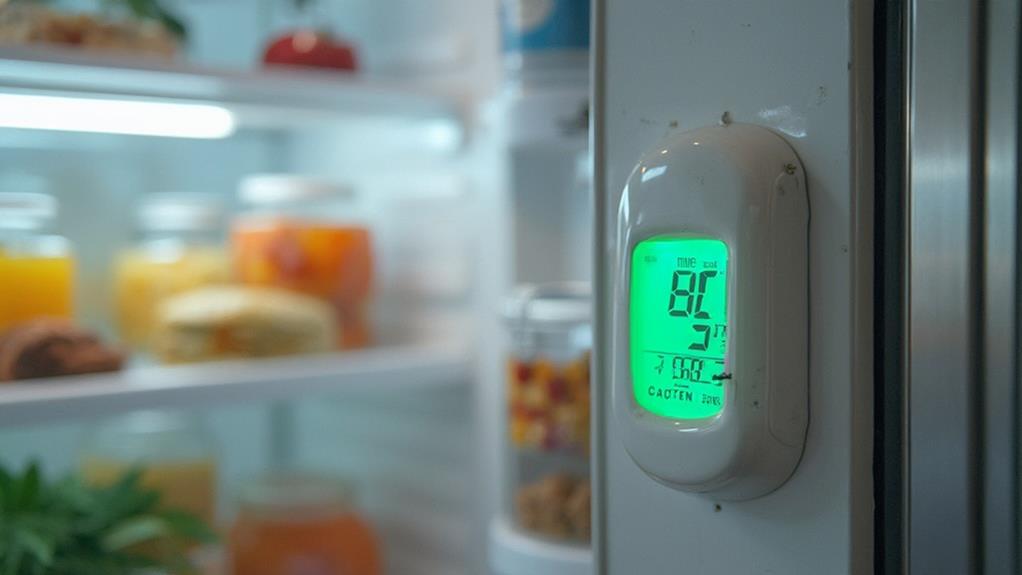Food safety and hygiene are crucial in preventing foodborne illnesses. These illnesses can lead to severe health issues, such as nausea and diarrhea, and can be life-threatening for vulnerable groups, including the elderly and pregnant women.
Proper food handling is key to reducing the risk of contamination. This includes washing your hands frequently, using separate cutting boards for raw meat, poultry, and seafood, and storing utensils and equipment in a clean environment.
Cooking meat to safe temperatures is essential. This means cooking poultry to at least 165°F (74°C), beef to at least 145°F (63°C), and pork to at least 145°F (63°C).
Perishable foods must be stored correctly to prevent bacterial growth. This includes refrigerating foods promptly, using airtight containers, and consuming leftovers within 3 to 4 days.
Following food safety guidelines not only protects individual health but also contributes to a safer community. By adhering to these practices, individuals can significantly reduce the risk of foodborne illnesses and promote a culture of food safety.
Understanding Foodborne Illnesses
Foodborne illnesses are a significant public health concern, as they can cause a range of symptoms including nausea, vomiting, and diarrhea. These illnesses occur when contaminated food or drinks are consumed, and the Centers for Disease Control and Prevention (CDC) estimates that 1 in 6 Americans gets sick from contaminated foods or beverages every year.
Common pathogens like bacteria, viruses, and parasites can contaminate food. These microbes can be present in undercooked meats, unwashed fruits, or contaminated water. For example, Salmonella can be found in undercooked chicken or eggs, while E. coli can contaminate unwashed fruits and vegetables.
Vulnerable groups, including the elderly, pregnant women, and those with weakened immune systems, are at higher risk of severe illness. These individuals should take extra precautions to ensure their food is handled and cooked safely.
Prevention is key to reducing the risk of foodborne illnesses.
Practicing good food hygiene is essential, including:
- Washing hands thoroughly with soap and water before handling food
- Cooking foods to the right temperatures to kill harmful microbes
- Storing perishables promptly in the refrigerator or freezer to prevent bacterial growth
Key Causes of Contamination
Contamination can occur in the kitchen through various sources. Understanding these sources is crucial for maintaining food safety.
Food handlers can introduce pathogens into food through poor personal hygiene. Not washing hands after using the restroom or handling raw foods can transfer harmful bacteria to ready-to-eat foods.
Cross-contamination can transfer harmful bacteria to food. Using the same cutting board or utensils for raw meat and ready-to-eat foods can spread bacteria like Salmonella and E. coli.
Inadequate cooking allows bacteria to survive and multiply. Under-cooking meat, poultry, or eggs can lead to foodborne illnesses.
For example, cooking poultry to an internal temperature of 165°F (74°C) is necessary to kill bacteria like Salmonella.
Improper storage promotes bacterial growth. Storing food at incorrect temperatures can allow bacteria to grow, especially in perishable items like dairy products and meat.
Refrigerating perishable foods at 40°F (4°C) or below and freezing foods at 0°F (-18°C) or below can prevent bacterial growth.
Importance of Proper Food Handling

Proper food handling is crucial for preventing foodborne illnesses and ensuring overall health. When handling food, it's essential to minimize the risk of contamination.
Wash your hands thoroughly with soap and water before and after handling food to reduce the transfer of harmful pathogens to the food.
Use separate cutting boards for raw meats and other food items, like vegetables or fruits, to prevent cross-contamination, a leading cause of foodborne illness.
Cook food to the recommended internal temperatures using a food thermometer to ensure that meat, poultry, and seafood reach safe temperatures.
Maintain personal hygiene by avoiding food handling when feeling unwell, especially with symptoms like vomiting or diarrhea.
Practicing proper food handling techniques not only protects yourself but also those who consume your meals.
Safe food practices are a shared responsibility, and individual actions play a vital role in preventing foodborne illnesses.
Safe Food Storage Practices
Proper Food Storage is Crucial for Food Safety
To prevent spoilage and foodborne illnesses, it's essential to store food properly. Refrigerate perishable items within two hours of purchasing or preparing them, and keep your refrigerator at or below 40°F (4°C) to slow down bacterial growth.
Use Airtight Containers and Label Them
When storing food, use airtight containers to prevent contamination and moisture loss. Label containers with the date you made or opened them to keep track of freshness. This helps you identify which foods are still safe to eat and which ones have gone bad.
Store Raw Meats Safely
Place raw meats on the bottom shelf of your refrigerator to avoid dripping onto other foods, which could cause cross-contamination. This prevents bacteria from raw meats from spreading to other foods.
Freeze Foods for Long-Term Storage
For long-term storage, consider freezing items. Most foods can be frozen, but be sure to use freezer-safe bags or containers to prevent freezer burn.
Portion out meals into smaller servings to make it easier to thaw only what you need.
Organize Your Pantry
Keep your pantry organized by storing dry goods in a cool, dry place, and check expiration dates regularly. This helps you identify which foods are still safe to eat and which ones have expired.
Personal Hygiene for Food Safety

Maintaining Personal Hygiene for Food Safety
Clean Hands are Essential
Washing your hands with soap and warm water for at least 20 seconds before and after handling food is crucial in preventing foodborne illnesses.
This practice is backed by the Centers for Disease Control and Prevention (CDC) as a key preventive measure.
Additional Hand Care
Keep your nails trimmed and free of dirt.
Remove rings or bracelets while cooking, as they can harbor bacteria.
Clothing and Utensils Matter
Wear clean aprons to prevent the transfer of bacteria from your clothes to food.
Use clean utensils and avoid cross-contamination by keeping raw and cooked foods separate.
Health Status and Food Preparation
If you're sick, especially with gastrointestinal issues, avoid food preparation altogether to protect others.
Cleaning and Sanitizing Techniques
Cleaning and Sanitizing: Essential Steps for Food Safety
Understanding the Difference
Cleaning removes dirt and food residues, while sanitizing reduces harmful microorganisms to safe levels.
The Cleaning Process
Start by using hot, soapy water to wash surfaces, utensils, and equipment.
Scrub thoroughly, paying attention to areas that often harbor bacteria, such as cutting boards and countertops.
The Sanitizing Process
Use a solution that's effective against pathogens, such as bleach diluted with water (1 tablespoon of bleach per gallon).
Apply the solution to the cleaned surfaces and let it sit for at least 30 seconds to kill the germs.
Rinse surfaces after sanitizing, especially if you used bleach, to prevent any residue that could affect food.
Maintaining Cleanliness
Routinely clean and sanitize your sponges and dishcloths, as they can become breeding grounds for bacteria.
By incorporating these cleaning and sanitizing techniques into your daily routine, you'll significantly reduce the risk of foodborne illnesses and create a safer kitchen environment for yourself and others.
Role of Temperature Control

Maintaining the Right Temperature is Crucial for Food Safety
Temperature control is essential in preventing foodborne illnesses. Food temperatures between 40°F and 140°F (4°C to 60°C) are considered the danger zone, where bacteria can multiply rapidly. This range is critical because it allows bacteria to grow, increasing the risk of foodborne illnesses.
Safe Temperature Guidelines for Common Foods
Understanding safe temperatures for different food types can help prevent foodborne illnesses. The following table provides a quick reference guide:
| Food Type | Safe Temperature (°F) | Notes |
|---|---|---|
| Poultry | 165°F | Cook thoroughly |
| Ground meats | 160°F | Use a meat thermometer |
| Whole cuts of beef | 145°F | Let rest for 3 minutes |
| Refrigerated food | Below 40°F | Check your fridge regularly |
How Does Understanding Food Labels Help in Ensuring Food Safety and Hygiene?
Understanding food labels nutrition information is essential for ensuring food safety and hygiene. By reading labels, you can identify potential allergens, check expiration dates, and assess nutritional value. This helps in making informed decisions about what you consume, ultimately promoting better health and wellness for you and your family.
Regulations and Standards in Food Safety
Regulations and Standards in Food Safety
Establishing Clear Protocols
In the realm of food safety, regulations and standards play a vital role in ensuring public health. The FDA and USDA are two organizations that set these regulations to establish clear protocols for food handling, preparation, and storage. These guidelines are designed to minimize foodborne illnesses and protect consumers from unsafe practices.
Compliance is Crucial
Compliance with these standards is crucial. They dictate requirements for food labeling, ingredient safety, and sanitary conditions in food establishments. By adhering to these regulations, you not only protect your customers but also your business's reputation.
Regular Inspections
Regular inspections are part of this framework. These checks help ensure that food establishments meet required hygiene and safety standards. If you fail to comply, you might face severe penalties, including fines or closure.
Staying Informed
Staying informed about changes in regulations is essential. Laws can evolve based on new research or outbreaks, and being proactive in your approach can help prevent issues before they arise.
Following established regulations and standards isn't just about compliance; it's about fostering trust and safety in the food you serve. Your commitment to these practices can make a significant difference in public health.
Educating Staff on Food Hygiene

Educating Staff on Food Hygiene
Comprehensive Training is Key
Understanding food safety regulations is crucial, but it's equally important to educate staff on food hygiene practices. Effective training programs ensure that every team member understands the importance of cleanliness, proper food handling, and cross-contamination prevention.
Onboarding and Refresher Courses
Start with a comprehensive onboarding process that covers the basics of food hygiene. This should include information on personal hygiene, sanitization of surfaces, and safe food storage temperatures.
Regular refresher courses can keep this knowledge fresh and up-to-date.
Catering to Different Learning Styles
Use a mix of hands-on training, visual aids, and assessments to cater to different learning styles. Highlight practical scenarios staff members might face, such as proper handwashing techniques and correct food storage methods.
Encouraging Accountability
Encourage a culture of accountability where staff members feel responsible for maintaining hygiene standards. Regularly review procedures and provide constructive feedback.
Consider implementing a buddy system for peer monitoring, which can help reinforce good practices.
Staying Up-to-Date with Regulations
Keep up with the latest food safety regulations and emerging trends by attending workshops or webinars. This commitment to continuous education not only enhances safety but also fosters a proactive approach to preventing foodborne illnesses.
Well-trained staff are your first line of defense against potential food safety hazards.
Community Impact of Food Safety
Food safety has a profound impact on the community. When local establishments prioritize food safety, they create a healthier environment for everyone.
Reduced Illness Rates: Effective food safety practices lower the chances of foodborne illnesses, leading to fewer hospital visits and less strain on healthcare resources.
For instance, the Centers for Disease Control and Prevention (CDC) estimate that 1 in 6 Americans get sick from foodborne illnesses each year, resulting in 128,000 hospitalizations and 3,000 deaths. By implementing proper food safety measures, businesses can significantly reduce these numbers.
Economic Stability: Safe food handling can improve a business's reputation, attracting more customers and boosting the local economy.
A study by the Food Marketing Institute found that a single food safety incident can cost a company up to $10 million in lost sales and damaged reputation. By prioritizing food safety, businesses can avoid these financial losses and contribute to the local economy.
Community Awareness: Promoting food safety encourages community members to educate themselves and each other, fostering a culture of health.
For example, food safety workshops and training programs can empower community members to make informed decisions about the food they eat. This, in turn, can lead to a greater sense of responsibility and trust within the community.
Enhanced Quality of Life: A safer food environment contributes to overall well-being, allowing families to focus on more than just avoiding illness.
When people are confident in the safety of their food, they can enjoy social gatherings, explore new cuisines, and live healthier lifestyles without the burden of foodborne illnesses.
